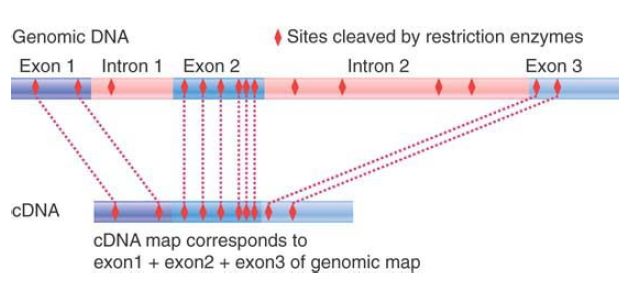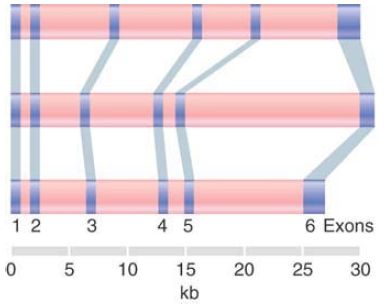

النبات

مواضيع عامة في علم النبات

الجذور - السيقان - الأوراق

النباتات الوعائية واللاوعائية

البذور (مغطاة البذور - عاريات البذور)

الطحالب

النباتات الطبية


الحيوان

مواضيع عامة في علم الحيوان

علم التشريح

التنوع الإحيائي

البايلوجيا الخلوية


الأحياء المجهرية

البكتيريا

الفطريات

الطفيليات

الفايروسات


علم الأمراض

الاورام

الامراض الوراثية

الامراض المناعية

الامراض المدارية

اضطرابات الدورة الدموية

مواضيع عامة في علم الامراض

الحشرات


التقانة الإحيائية

مواضيع عامة في التقانة الإحيائية


التقنية الحيوية المكروبية

التقنية الحيوية والميكروبات

الفعاليات الحيوية

وراثة الاحياء المجهرية

تصنيف الاحياء المجهرية

الاحياء المجهرية في الطبيعة

أيض الاجهاد

التقنية الحيوية والبيئة

التقنية الحيوية والطب

التقنية الحيوية والزراعة

التقنية الحيوية والصناعة

التقنية الحيوية والطاقة

البحار والطحالب الصغيرة

عزل البروتين

هندسة الجينات


التقنية الحياتية النانوية

مفاهيم التقنية الحيوية النانوية

التراكيب النانوية والمجاهر المستخدمة في رؤيتها

تصنيع وتخليق المواد النانوية

تطبيقات التقنية النانوية والحيوية النانوية

الرقائق والمتحسسات الحيوية

المصفوفات المجهرية وحاسوب الدنا

اللقاحات

البيئة والتلوث


علم الأجنة

اعضاء التكاثر وتشكل الاعراس

الاخصاب

التشطر

العصيبة وتشكل الجسيدات

تشكل اللواحق الجنينية

تكون المعيدة وظهور الطبقات الجنينية

مقدمة لعلم الاجنة


الأحياء الجزيئي

مواضيع عامة في الاحياء الجزيئي


علم وظائف الأعضاء


الغدد

مواضيع عامة في الغدد

الغدد الصم و هرموناتها

الجسم تحت السريري

الغدة النخامية

الغدة الكظرية

الغدة التناسلية

الغدة الدرقية والجار الدرقية

الغدة البنكرياسية

الغدة الصنوبرية

مواضيع عامة في علم وظائف الاعضاء

الخلية الحيوانية

الجهاز العصبي

أعضاء الحس

الجهاز العضلي

السوائل الجسمية

الجهاز الدوري والليمف

الجهاز التنفسي

الجهاز الهضمي

الجهاز البولي


المضادات الميكروبية

مواضيع عامة في المضادات الميكروبية

مضادات البكتيريا

مضادات الفطريات

مضادات الطفيليات

مضادات الفايروسات

علم الخلية

الوراثة

الأحياء العامة

المناعة

التحليلات المرضية

الكيمياء الحيوية

مواضيع متنوعة أخرى

الانزيمات
Organization of Interrupted Genes Can Be Conserved
المؤلف:
JOCELYN E. KREBS, ELLIOTT S. GOLDSTEIN and STEPHEN T. KILPATRICK
المصدر:
LEWIN’S GENES XII
الجزء والصفحة:
8-3-2021
2502
Organization of Interrupted Genes Can Be Conserved
KEY CONCEPTS
-Introns can be detected when genes are compared with their RNA transcription products by sequencing.
-The positions of introns are usually conserved when homologous genes are compared between different organisms. The lengths of the corresponding introns can vary greatly.
-Introns usually do not encode proteins.
When a gene is uninterrupted, the map of its DNA corresponds with the map of its mRNA. When a gene possesses an intron, the map at each end of the gene corresponds to the map at each end of the message sequence. Within the gene, however, the maps diverge because additional regions that are found in the gene are not represented in the mature mRNA. Each such region corresponds to an intron. The example in FIGURE 1 compares the restriction maps of a β-globin gene and its mRNA. There are two introns, each of which contains a series of restriction sites that are absent from the complementary DNA (cDNA). The pattern of restriction sites in the exons is the same in both the cDNA and the gene. The finer comparison of the base sequences of a gene and its mRNA permits precise identification of introns. An intron usually has no open reading frame. An intact reading frame is created in an mRNA sequence by the removal of the introns from the primary transcript.

FIGURE 1 Comparison of the restriction maps of cDNA and genomic DNA for mouse βb-globin shows that the gene has two introns that are not present in the cDNA. The exons can be aligned exactly between cDNA and the gene.
The structures of eukaryotic genes show extensive variation. Some genes are uninterrupted and their sequences are colinear with those of the corresponding mRNAs. Most multicellular eukaryotic genes are interrupted, but the introns vary enormously in both number and size.
Genes encoding polypeptides, rRNA, or tRNA can all have introns.
Introns also are found in mitochondrial genes of plants, fungi, protists, and one metazoan (a sea anemone), as well as in chloroplast genes. Genes with introns have been found in every class of eukaryotes, Archaea, bacteria, and bacteriophages, although they are extremely rare in prokaryotic genomes.
Some interrupted genes have only one or a few introns. The globin genes provide a much-studied example . The two general classes of globin gene, α and β, share a common organization: They originated from an ancient gene duplication event and are described as paralogous genes or paralogs. The consistent structure of mammalian globin genes is evident from the “generic” globin gene presented in FIGURE 2.

FIGURE 2 .All functional globin genes have an interrupted structure with three exons. The lengths indicated in the figure apply to the mammalian βb-globin genes.
Introns are found at homologous positions (relative to the coding sequence) in all known active globin genes, including those of mammals, birds, and frogs. Although intron lengths vary, the first intron is always fairly short and the second is usually longer. Most of the variation in the lengths of different globin genes results from length variation in the second intron. For example, the second intron in the mouse α-globin gene is only 150 base pairs (bp) of the total
850 bp of the gene, whereas the homologous intron in the mouse major β-globin gene is 585 bp of the total 1,382 bp. The difference in length of the genes is much greater than that of their mRNAs (α-globin mRNA = 585 bases; β-globin mRNA = 620 bases). The example of the gene for the enzyme dihydrofolate reductase (DHFR), a somewhat larger gene, is shown in FIGURE 3. The mammalian DHFR gene is organized into six exons that correspond to a 2,000-base mRNA. The gene itself is long because the introns are very long. In three mammal species the exons are essentially the same and the relative positions of the introns are unaltered, but the lengths of individual introns vary extensively, resulting in a variation in the length of the gene from 25 to 31 kilobases (kb).

FIGURE 3. Mammalian genes for DHFR have the same relative organization of rather short exons and very long introns, but vary extensively in the lengths of introns.
The globin and DHFR genes are examples of a general phenomenon: genes that share a common ancestry have similar organizations with conservation of the positions (of at least some) of the introns.
 الاكثر قراءة في مواضيع عامة في الاحياء الجزيئي
الاكثر قراءة في مواضيع عامة في الاحياء الجزيئي
 اخر الاخبار
اخر الاخبار
اخبار العتبة العباسية المقدسة

الآخبار الصحية















 قسم الشؤون الفكرية يصدر كتاباً يوثق تاريخ السدانة في العتبة العباسية المقدسة
قسم الشؤون الفكرية يصدر كتاباً يوثق تاريخ السدانة في العتبة العباسية المقدسة "المهمة".. إصدار قصصي يوثّق القصص الفائزة في مسابقة فتوى الدفاع المقدسة للقصة القصيرة
"المهمة".. إصدار قصصي يوثّق القصص الفائزة في مسابقة فتوى الدفاع المقدسة للقصة القصيرة (نوافذ).. إصدار أدبي يوثق القصص الفائزة في مسابقة الإمام العسكري (عليه السلام)
(نوافذ).. إصدار أدبي يوثق القصص الفائزة في مسابقة الإمام العسكري (عليه السلام)


















